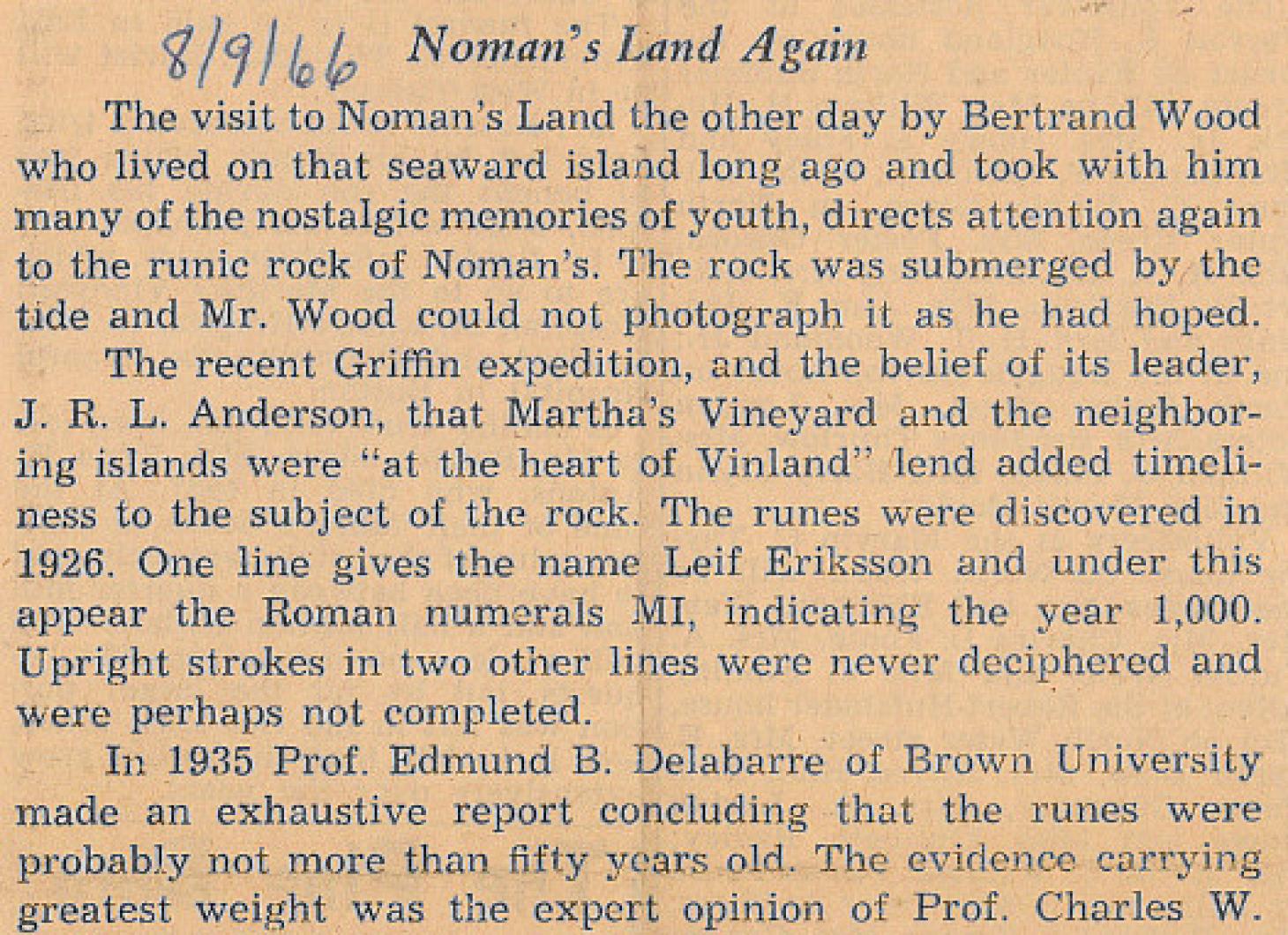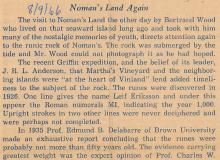The visit to Noman’s Land the other day by Bertrand Wood who lived on that seaward island long ago and took with him many of the nostalgic memories of youth, directs attention again to the runic rock of Noman’s. The rock was submerged by, the tide and Mr. Wood could not photograph it as he had hoped.
The recent Griffin expedition, and the belief of its leader, J. R. L. Anderson, that Martha’s Vineyard and the neighboring islands were “at the heart of Vinland” lend added timeliness to the subject of the rock. The runes were discovered in ‘1926. One line gives the name Leif Eriksson and under this appear the Roman numerals MI, indicating the year 1,000. Upright strokes in two other lines were never deciphered and were perhaps not completed.
In 1935 Prof. Edmund B. Delabarre of Brown University, made an exhaustive report concluding that the runes were probably not more than fifty years old. The evidence carrying . greatest weight was the expert opinion of Prof. Charles W. Brown, head of the department of geology at Brown University, that the runes could have stood the scouring of the sea for not more than a century, or if exposed to lichen growth and atmospheric conditions, could have lasted not more than fifty years. But if the rock had fallen face down so that it was protected by earth for hundreds of years, the runes could have endured.
Professor Brown thought this last “improbable”; but the lurking uncertainty of that word invites continued speculation. History teems with improbabilities. Professor Delabarre’s other arguments were scholarly, but still a doubt remains that a combination of circumstances might have accounted for his objections. Even the soundest s,cholarship in a matter of this kind may lack the finality required to set at rest the wondering of those captivated by the unanswered questions of the sagas and the Vinland map.











Comments